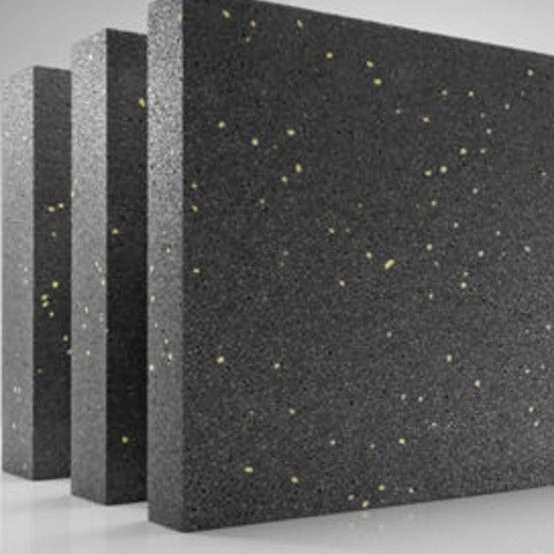As an expert in materials engineering with more than ten years focused on foam technologies, people often ask me about good sources for top-quality EPS products. I want to point out one that I have used for jobs needing strong results—HUASHENG, a key player in smart EPS production. They make items that really stand out for heat blocking, toughness, and following current rules, all at reasonable prices. Picture working with a group that supplies strong materials and also gives custom tips to match your exact needs, whether you deal with energy rules or green goals. Their panels with added graphite, for example, give great R-values without making things too thick, which works well for builders who think ahead. I have watched their products turn normal jobs into smart, lasting wins. If you look for materials that work well in different fields, this company acts like a reliable partner, always there with knowledge and help. Now, let’s look at the flexible world of Styrofoam and EPS, where these new ideas really work.
Introduction to Styrofoam and EPS
You probably know Styrofoam as that light, white foam used in packing. But it is really a brand name for expanded polystyrene, or EPS. This stuff grows from polystyrene beads with steam and heat. It forms a firm, closed-cell build. You get good points from it, like strong heat blocking, solid strength against pressure, small weight, and holding up against water. These features make EPS a common pick in fields where saving effort counts.
Past the simple facts, newer types go further. For instance, ones mixed with graphite bounce back heat in a better way, improving blocking without extra size. You save money and help the planet, since EPS can be reused and stays good for many years. In this guide, you will check out the main seven uses in industry. You will see how these qualities fix real problems. From building to farming, you might find ways to use EPS in your own tasks.
Construction and Building Insulation
Moving from basic qualities, think about how EPS does well in building work, where energy needs grow. You run into tougher rules like the 2025 IECC. These ask for better outer layers to lower pollution. Here, steady insulation sheets go outside the wood covering. They stop heat loss from the wood beams. This gives even results all around.
In outside walls, EPS sheets offer high R-values. They cut down U-factors without needing bigger setups. You put them in place simply over the frames. This boosts comfort and lasting power. For spots with fire risks, types that resist fire add protection. They meet world rules while keeping form under pressure.

I suggest using Graphite Grade – S – Flame-Retardant Panels for better outcomes. These include graphite to push away heat from rays. They reach higher efficiency in houses or business buildings. You reduce heat shortcuts. You fit with LEED green marks. And you get steady hold over time against weather changes. This use fixes your issues with rule following and power costs. It brings real benefits.
Packaging and Protective Cushioning
Adding to the strong needs in building, packing uses EPS‘s soft padding to guard items on the way. You manage breakable things like gadgets or glass items. There, bumps lead to expensive harm. EPS shapes into special forms. It takes in hits and shakes well.
Its small weight drops delivery costs. And the closed cells fight against squishing over time. You skip problems with sinking that happen in other foams. This means steady guard all the time. For big factory levels, EPS that can be reused helps green moving of goods. It cuts down trash.
This way helps with your fears about keeping products safe in world supply lines. Mix it with thick types for hard jobs. You keep things safe without using too much stuff.
Thermal Shipping Containers
Taking guard further to loads that need steady heat, EPS works great in heat-keeping boxes. You move things that spoil easily, like shots or food. There, small changes in temp ruin them. Boxes lined with EPS keep the cold path. This comes from low heat flow.
You pile them up well in trucks or flights. This saves room and gas. Newer pressed forms give the same blocking all over. They stop warm spots. This use handles your tough spots in strict fields, like medicine making. It makes sure you follow rules and stay dependable.
For exact work, look at Graphite Polystyrene (Extrusion Method) – S33. It is built for steady heat watch. Its even cells hold pressure in layers stacked up. This fits long trips. You save power in cooled systems. It fixes cost and green worries right away.
Geofoam for Infrastructure Projects
From set spaces to big ground jobs, geofoam changes big works. You face shaky ground in roads or bridges. There, heavy dirt piles lead to sinking. EPS blocks serve as light dirt fill. They lower push on bases.
You set them down fast. This speeds up jobs and drops work costs. Their hold against water stops breakdown in damp spots, not like old dirt piles. Thick types carry weight without moving. They keep things steady.
This fixes your problems with time lines and money plans in city building work. Use types with added graphite for extra power. It makes geofoam a wise pick for dirt banks or yard shaping.
Automotive and Transportation Components
Shifting to moving uses, EPS fits into cars for safety and saving. You plan bumpers or inside parts that need to take hits and cut noise. Light EPS padding lowers car weight. This helps with gas use.
In moving, it shapes heat-keeping areas for load vans. It keeps goods safe while going. Types that resist fire meet safety laws. They handle shakes and heat levels. You gain from easy shaping. It fits hard forms simply.
This meets your needs for how things work. It boosts lasting power while cutting smoke output. Choose new sheets in power cars from plugs. There, heat control counts a lot.
Marine and Buoyancy Applications
Like the toughness in cars, sea uses need water-proof floating. You make piers or floats that require lift without taking in water. EPS’s closed cells give up force. They fight sinking and decay.
You use it in floating marks or fish farm nets. There, strong waves test stuff. Thick pressure types hold builds firm. They stop drifting. This handles your worries in shore jobs. It offers long life against salt and sun rays.
For better work, panels that resist fire add burn guard in boat spots. You get green picks that reuse. They match sea save efforts.
Agricultural and Horticultural Supports
Linking to sea toughness, farming gains from EPS in watched places. You block heat in glass houses or make seed holders. This sets temps right for best growth. Light sheets cut warming costs. They help with crops all year.
In plant care, guard covers keep plants from cold bites. And floating helps in water growing. Pressed types give even blocking. They hold against bugs and chemicals. You fix saving in farm work. It lowers power use and trash.
This way backs your green ways. Materials that reuse last longer in service.
Services for Optimal EPS Implementation
To get the most from these uses, find skilled help that guides picking and adding. You get tech talks that match stuff to your weather and details. This covers blocking size to system fit.
Moving plans make sure things arrive on time. This cuts waits. Steady help includes setup checks and fix talks. It builds easy jobs. These tools solve your add-on problems. They improve full wins.
FAQs
Q: How does EPS compare to other foams in industrial durability?
A: EPS offers better moisture resistance and long-term stability than open-cell alternatives, lasting over 50 years with proper protection, while providing cost-effective strength.
Q: Can advanced EPS meet fire safety requirements in multiple industries?
A: Yes, flame-retardant formulations comply with international codes, making them suitable for construction, automotive, and marine applications without compromising insulation.
Q: What environmental benefits come from using EPS in your projects?
A: EPS recycles easily, reduces energy consumption through superior insulation, and lowers material waste, supporting green certifications and lifecycle sustainability.







